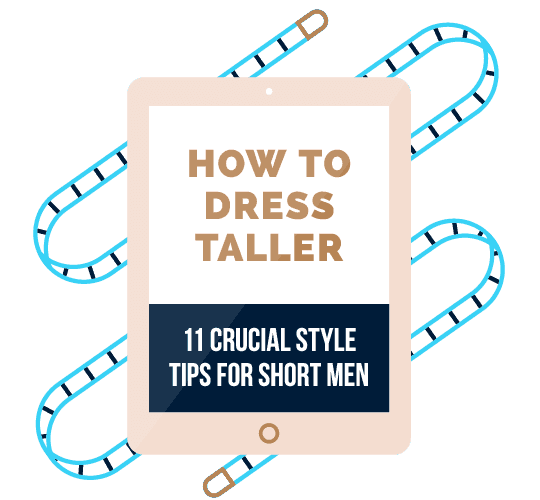If you’re curious about greenwashing, look no further. Here’s everything you need to know about it.

Over the last several years, sustainability has become increasingly important due to worsening environmental conditions and the effects of climate change.
Thankfully, some brands are fully embracing sustainability and changing their production methods to be more eco-friendly.
Unfortunately, other brands are simply using sustainability as a branding technique. They’re advertising themselves as being better for the planet, but they’re not actually doing much behind the scenes to back it up.
This approach has become known as “greenwashing” and is one of the seediest tactics in the fashion industry today.
But what does greenwashing actually involve, and how can you spot it? I’ll answer these questions and more in this article.
Greenwashing 101
First, let’s look at the definition of the term. Business News Daily summed it up well with this description:
“Greenwashing is when a company purports to be environmentally conscious for marketing purposes but actually isn’t making any notable sustainability efforts.”
Brands that greenwash often run entire ad campaigns around sustainability, using buzzwords like “sustainable” and “eco-friendly,” but their actual efforts pale in comparison to their promises.
While some brands take zero sustainability action, most of them take just enough action to get away with calling themselves sustainable on a technicality.
This definition from Earth.org highlights that discrepancy in spending:
“Greenwashing is essentially when a company or organization spends more time and money on marketing themselves as being sustainable than on actually minimizing their environmental impact.”
Ultimately, greenwashing is a sales tactic. The demand for sustainability created a huge new market, and companies are chomping at the bit to tap into that market and make some serious profit.
Example: H&M
One of the most offending cases of greenwashing comes from H&M.

Go on H&M’s site, and you’ll find an entire section devoted to sustainability that frames the brand as being environmentally conscious and proactive.
While there are plenty of nice-sounding promises, there’s not a lot of data to back them up. Sure enough, H&M isn’t exactly being truthful with its claims.
The company has been called out multiple times for greenwashing and has even been sued twice on those grounds.
Much of the controversy centered around the brand’s Conscious Choice Collection, which was marketed as a sustainable line and sold at premium prices.
However, the clothes were found to be no more sustainable than any of H&M’s other clothing, which led the retailer to remove the labels after a regulatory investigation.
And this isn’t the only time H&M’s greenwashing has been noticed.
For example, the company rolled out a garment collection program that involved in-store recycling bins where customers could donate old clothing.
The advertising around this campaign suggested that the donated clothing would be recycled into new clothing. In reality, however, estimates are that only about 35 percent of donated clothing is recyclable at all, and the actual amount is likely closer to 0.1 percent.
This take-back scheme also didn’t require H&M to change its production model at all, which garnered criticism from activists.
The company continued to churn out roughly half a billion garments per year, with recycled materials comprising less than one percent of all materials used.
How to Spot Greenwashing
While H&M has had some of the more egregious cases of greenwashing, this practice is widespread throughout the fashion industry.
Greenwashing tends to be most common among fast fashion brands like Shein, ASOS, and Zara, but there are less obvious culprits as well.
Since greenwashing happens in degrees, it’s not always easy to identify, and it can be tricky to determine whether a brand is actually being sustainable or just greenwashing.
Broadly, the best way to avoid greenwashing is to look for transparency.
Companies that actually take sustainability action will back up their claims with detailed facts and figures. (This information is often third-party certified).
Truly sustainable brands will have substantial information (including statistics) about fabric sourcing and use, specific sustainability initiatives, water and energy consumption, carbon emissions, and often social impact.
The less transparent a company is about its sustainability claims, the greater the likelihood that it’s greenwashing.
Unfortunately, this means that you will usually have to research a company in some detail to be able to determine how true its claims are.
There are sustainability rating sites like Good On You, but these don’t always present the full picture, so it’s best to do your own homework.
Common Types of Greenwashing in Fashion
Here are some specific greenwashing examples that show up over and over again in the clothing industry:
Recycled Polyester
Many fashion brands claim they’re sustainable because they use recycled polyester. These claims argue that recycling polyester keeps it out of the ocean and gives new life to old plastics.
However, recycled polyester isn’t as sustainable as these companies would have you believe. It is better than virgin polyester, but that doesn’t really make up for its downsides.
One of the biggest problems is that polyester tends to be blended with other fabrics, making it almost impossible to recycle. This is the case for the majority of recycled polyester in the fashion industry.
Companies will also claim that using recycled polyester is “circular,” a claim that suggests a closed-loop system that sustains itself.
However, this is categorically untrue because of the fact that polyester clothes usually can’t be recycled. Instead, fashion brands often use polyester from plastic bottles (which are then nearly unrecyclable once turned into clothes).
In addition, recycled polyester still deposits microplastics when worn and washed, which increases water pollution.
Carbon Neutral
More and more clothing brands are advertising themselves as “carbon neutral,” a phrase you’ve probably seen on many Instagram posts and website banners.
The phrase suggests that a company is removing just as much carbon as it’s putting out to achieve net zero. It seems like carbon neutrality is the result of a company reducing its own emissions, but this isn’t always the case.
To get around this, many brands opt to invest in carbon offsetting, which is the process of paying for carbon reduction or removal. (An example is paying to plant trees.)
As it turns out, carbon offsets aren’t as good as they seem.
And if a company is paying for offsets but failing to reduce its own emissions, then there’s still harm being done.
“Sustainable” Collections
Offering a separate “sustainable” clothing line is a great way for brands to appear eco-friendly without having to change their production models.
These companies will continue to make tons of clothing using harmful materials and processes while spotlighting a few sustainable pieces for some nice PR.
This tactic can be tricky because these sustainable lines can be actually sustainable. However, the impact of a few sustainable garments can’t negate a brand’s overall environmental footprint.
The 7 Sins of Greenwashing
When investigating companies’ sustainability claims, it’s a good idea to keep an eye out for what is sometimes called “the seven sins of greenwashing.”
These are some of the most common greenwashing tactics employed by companies as identified by TerraChoice in 2007.
Most greenwashing tactics are guilty of at least one of these sins, and you’ll often see more than one at a time.
Sin of the Hidden Trade-Off
This greenwashing strategy involves marketing a product that is sustainable in a specific way but actually harms the environment in another.
This hidden trade-off is either ignored or minimized, with brands sometimes using clever language to disguise the real impact. The use of recycled polyester is one example.
Sin of No Proof
Companies commit this sin when they make claims without evidence to back them up.
This is an extremely common sin, and brands are often guilty of it in several ways. If an environmental claim isn’t backed up by specific proof, then it’s likely greenwashing.
Sin of Vagueness
This involves the use of terms that are vague to the point of being meaningless. “All-natural,” “responsible,” and even “sustainable” can all fall under this category if used without context that provides detail.
Often, these vague terms are used to imply a degree of sustainability that’s not actually present. For instance, “all-natural” can imply that a product’s entire production life cycle is sustainable when in reality only a small part is.
Sin of Worshiping False Labels
In this case, false labels are fake certifications that make it seem like a product has been independently certified by a third-party organization when no actual certification actually exists.
In fashion, this often happens when brands use words like “certified” or “verified” without explaining who is making these endorsements or how they were earned.
Companies will also invent their own certification programs to appear more sustainable.
One example is Amazon’s Aware clothing line, which is backed by two certifications that Amazon itself created.
These certifications are mentioned alongside other legitimate third-party certifications in an attempt to make some of the products seem greener than they are.
Sin of Irrelevance
This sin is committed when brands make claims that may be truthful but don’t actually affect the sustainability of a product.
Often, these claims are either things most brands are already doing or redundant statements used to make something seem more sustainable.
For example, calling a cotton shirt “vegan” and “natural” falls into this category because all cotton is inherently vegan and natural. These terms don’t say anything about the shirt’s sustainability.
Sin of Lesser of Two Evils
This sin occurs when brands make claims that are categorically true but distract consumers from the environmental impact of that category as a whole.
Any fast fashion brand claiming to be sustainable is guilty of this sin since fast fashion is inherently unsustainable. In these instances, brands ignore the greater impact of the fast fashion production model in order to magnify their small sustainability efforts.
Sin of Fibbing
Many brands will outright lie in order to appear more sustainable. This is the hardest sin to spot, which is why many brands are able to get away with it.
The case of H&M’s Conscious Collection is a prime example of this sin. The clothes were no more sustainable than H&M’s other clothing, but the brand used false and misleading claims to trick shoppers.
Greenwashing FAQs
Greenwashing can be confusing, so here are a few quick answers to common questions:
What is greenwashing in simple words?
Greenwashing is marketing that uses false or misleading claims to make a brand or product appear more sustainable than it really is.
What are the main types of greenwashing?
Typical forms of greenwashing in fashion are hiding information, making vague claims and using buzzwords, offering separate sustainable clothing lines, and lacking transparency of information.
What are the 7 sins of greenwashing?
The seven sins of greenwashing are:
- The sin of the hidden trade-off
- The sin of no proof
- The sin of vagueness
- The sin of worshiping false labels
- The sin of irrelevance
- The sin of lesser of two evils
- The sin of fibbing
What Can Be Done About Greenwashing?
Unfortunately, buying sustainable and ethical clothing isn’t a simple matter. You can’t just go out to a store and buy a garment based on its labels alone.
That’s why being able to detect greenwashing is so important. The more comfortable you are with researching brands, the more educated purchasing decisions you’ll be able to make.
You don’t have to dive into slow fashion headfirst, but you can make small changes by supporting truly sustainable brands.
There are some anti-greenwashing laws in the works, but it’s unclear how long it will take until the fashion industry is regulated enough for such laws to really make a difference.
In the meantime, there are activism organizations like Fashion Revolution and Remake that help educate consumers about greenwashing in the clothing industry.
Questions? Comments? Leave them below!






Ask Me Anything